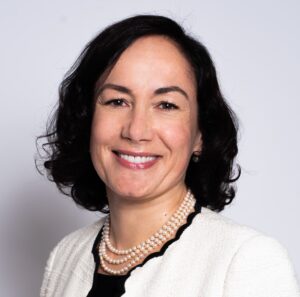By Fabiana Fedeli, Chief Investment Officer: Equity, Multi-Asset and Sustainability at M&G Investments (UK)
So far in 2023, global financial markets have experienced some wild swings, dictated by the guessing game over growth, inflation and the path of US interest rates. Banking sector jitters have also added to the uncertainty, with investment managers having rarely seen such dramatic shifts in market views in such brief timeframes.

This is why caution is required when investing at the moment, because no one can predict what will happen in the world’s largest economies. Even though consensus expectations point to recessions in the US, UK and Europe over the near term, GDP growth estimates have been revised upwards, and the odds for recession have fallen. History has shown that previous recessions related to interest rate hikes have occurred with a 5- to 15-month lag from the last rate increase, and have varied in severity. In reality, no one can be sure about the timing and extent of a downturn.
In such uncertain conditions, one must avoid the guessing game and go back to fundamentals to determine how best to invest. Consequently, we are broadly neutral to underweight global equities based on prevailing valuations. Now is not the time to take on broad country or sector bets. Corporate earnings in the US, UK and Europe have been mixed, but reasonably resilient, generally beating estimates. But global equity valuations differ widely across countries and even within sectors, with individual companies offering a wide variety of dividend and earnings yields. As such, investors need to be selective in choosing equity exposure.
In M&G’s view, US equities are more expensive than their counterparts in Japan, China and certain other emerging markets, which offer good value on a relative basis. As such, our multi-asset portfolios are overweight the latter markets at the expense of the US, Canada and Australia, among others, and they are carefully diversified to reflect the elevated uncertainty.
Meanwhile, global bonds are a relatively safe bet, now offering the highest real yields in 10 years after the past year’s central bank rate hiking cycle. Some government bond yields are equivalent to certain equity earnings yields, but with much less risk, so we have been happy to have increased our fixed interest holdings over the last few months. This includes 30-year US Treasuries as a way to offset equity risk, and because real US Treasury yields are generally higher than their European equivalents. Certain emerging market bonds are also offering attractively high yields for the risk involved. However, our portfolio positioning is broadly neutral in global bonds, given the still-high interest rate risk prevailing worldwide. Should inflation remain stubborn and continue to surprise to the upside, investors could face more rounds of central bank rate hikes that will further undermine bond prices.
So with global equity and bond valuations not offering adequate potential returns for the risk involved, our global cash holdings are higher than average. This is for diversification purposes and to take advantage of any future tactical opportunities that might arise when assets become mis-priced.
Despite the highly uncertain environment, we still see ample opportunities to generate above-market investment returns going forward by using a relative-value approach across both global equities and bonds. In our view, there is no need to try to predict the next direction of interest rates or the likelihood of a recession and take directional bets. Instead, focus on fundamental valuations of specific stocks and bonds, be sure to stay carefully diversified, and make volatility your friend by using short-term mis-pricing to add high-quality assets at attractive valuations.



